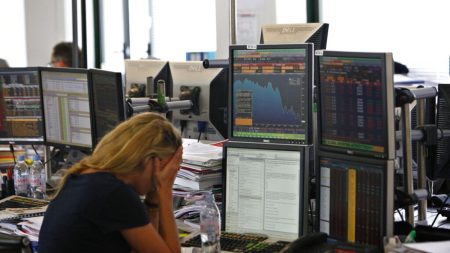Global Market Overview:
Global financial markets experienced a week of mixed performance influenced by rising government bond yields, inflation data, and central bank decisions. European markets stalled, with the pan-European Stoxx 600 index slightly declining, influenced by rising bond yields and the European Central Bank’s (ECB) monetary policy stance. While the ECB implemented a 25 basis point rate cut, its emphasis on maintaining a restrictive monetary policy, coupled with expectations of a slower easing pace, sent government bond yields soaring, particularly in Germany. This rise in yields exerted pressure on equity valuations. The US market also saw mixed results, with the Dow Jones and S&P 500 declining while the Nasdaq Composite edged higher, driven by continued strength in technology stocks. The US inflation data, showing a slight increase, didn’t significantly alter expectations for a Federal Reserve rate cut, but reinforced the view of a more gradual easing. This contributed to a rise in US Treasury yields. In contrast, Chinese markets rallied on expectations of further stimulus measures, including potential rate cuts and more accommodative fiscal policies.
European Market Dynamics:
European markets mirrored the global trend of uncertainty, with major indices seeing marginal declines. The focus remained on political instability and the ECB’s monetary policy decisions. While the ECB delivered a rate cut, its hawkish stance regarding future easing, coupled with rising bond yields, tempered market enthusiasm. Sector performance within Europe varied, with consumer stocks experiencing a strong rally fueled by hopes of Chinese stimulus measures. Luxury brands like LVMH, Hermes, L’Oréal, and Christian Dior saw significant gains. Conversely, the energy and industrial sectors faced pressure due to weak oil and industrial metal prices, impacting companies like Safran, Rolls-Royce, and Shell. German inflation data, confirming a year-on-year increase, further complicated the ECB’s policy outlook. While the data might encourage a restrictive stance, global factors, particularly potential trade tariffs, could influence the Eurozone’s growth outlook and potentially necessitate faster rate cuts.
US Market Performance and Inflation Data:
The US stock market exhibited a mixed performance, with technology stocks driving gains in the Nasdaq Composite while other sectors faced downward pressure. The interest-rate-sensitive utilities sector led the declines in the S&P 500, followed by energy and healthcare. In contrast, growth-oriented sectors like consumer discretionary and communication services, boosted by strong performances from companies like Tesla and Alphabet, continued their post-election rally. Tesla’s surge was attributed to record highs and continued investor enthusiasm, while Alphabet benefitted from advancements in quantum computing. The US inflation data, showing a modest increase, aligned with market expectations and did not significantly alter the outlook for a Fed rate cut. However, the market’s anticipation of a more gradual easing pace contributed to the rise in US Treasury yields.
Chinese Stimulus and Market Response:
Chinese stock markets provided a contrasting narrative, rallying on signals of increased stimulus measures. The annual Politburo and economic planning conference indicated a shift towards "proactive fiscal policy and moderately loose monetary policy," terminology not used since the 2008 financial crisis. This fueled market expectations of rate cuts and more accommodative fiscal policies in the coming year. This positive sentiment drove gains in the China A50 and the Hang Seng Index, bucking the trend of declines or stagnation seen in other major markets. The prospect of Chinese stimulus provided a degree of support to global markets, particularly impacting European consumer stocks.
Central Bank Actions and Monetary Policy:
Central bank actions played a significant role in shaping market dynamics. The ECB’s rate cut, while anticipated, was accompanied by messaging suggesting a slower pace of easing, leading to a rise in bond yields. Similarly, while the market expects a Federal Reserve rate cut, the prevailing view is that the easing cycle will be more gradual than previously anticipated. This expectation contributed to rising US Treasury yields. The Bank of Canada (BOC) and the Swiss National Bank (SNB) also implemented rate cuts, but with differing signals. The BOC hinted at a slowdown in its easing cycle, while the SNB maintained a dovish stance. These varying approaches by central banks highlight the complex interplay of economic data, inflation concerns, and global growth outlook in shaping monetary policy decisions.
Impact of Geopolitical and Economic Factors:
Geopolitical and economic uncertainties continued to exert influence on market sentiment. Political instability in Europe remained a concern, while potential trade tariffs loomed as a risk to global growth. The contrasting narratives of rising bond yields, indicating potential inflationary pressures, and the expectation of further central bank easing, reflecting concerns about economic slowdown, highlight the delicate balance facing policymakers and investors. The differing responses of various market sectors also underscore the uneven impact of these global forces. While technology stocks continued to benefit from investor optimism, more cyclical sectors, such as energy and industrials, faced headwinds from concerns about global growth and commodity prices. The overall market picture reflects a complex environment where central bank actions, inflation data, geopolitical risks, and economic growth prospects intertwine to shape investor sentiment and market performance.














